Name Yitzchak Ginsburgh | ||
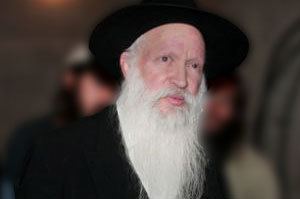 | ||
Shemot 5772 the 7 good qualities of moses rabbi yitzchak ginsburgh
Yitzchak Ginsburgh (born 14 November 1944) is an American-born Israeli rabbi affiliated with the Chabad movement. He is regarded as one of Chabad's leading authorities on Jewish mysticism. He is the leader of the Derech Chaim Movement and founder of the Gal Einai Institute, which publishes his written works. His students include Charedim, religious Zionists, and Chabad Chassidim, as well as ba'alei teshuvah. He is currently the president of a number of educational institutions, including the Od Yosef Chai yeshiva in the settlement of Yitzhar in the West Bank. Ginsburgh has a unique teaching style, and has lectured in various countries, and throughout Israel. His teachings cover a wide range of subjects, including science, psychology, marital harmony and monarchy in Israel. He has published over 100 books in Hebrew and English, most of which are edited by his students.
Contents
- Shemot 5772 the 7 good qualities of moses rabbi yitzchak ginsburgh
- Parshat mas ei 5771 journeys to our soul root rabbi yitzchak ginsburgh
- Early life
- Israel
- Teachings
- Psychology
- Meditation
- Music and art
- Students
- Religious and political views
- Controversy
- List of works in English
- Partial list of works in Hebrew
- Discography
- References
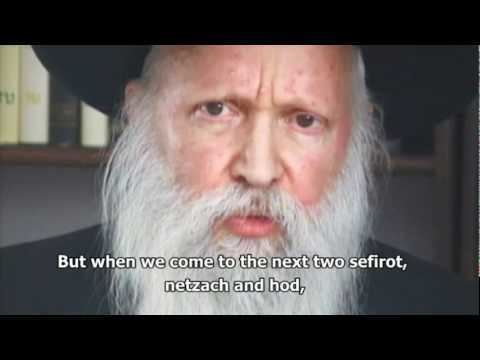
Ginsburgh is a musician and composer. Some of his music has been performed by notable Israeli musicians. His students include Torah scholars, academics and musicians.

Some of his statements regarding the differences between Jews and non-Jews have aroused controversy. Ginsburgh and his students have responded to the controversy by clarifying that his use of concepts taken from Chassidut and Kabbalah are far removed from the language that the media has adopted.
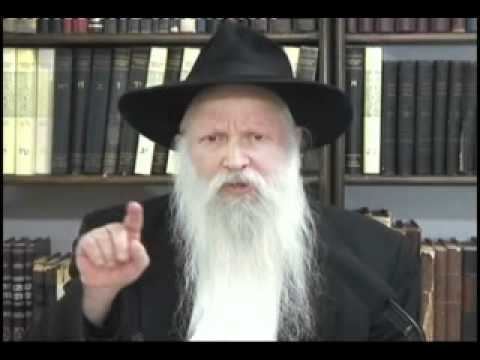
Parshat mas ei 5771 journeys to our soul root rabbi yitzchak ginsburgh
Early life

Ginsburgh was born in St. Louis, Missouri, in 1944, the only child of Shimshon Ya'akov and Bryna Malka (nee Dunie) Ginsburgh. He was considered a child prodigy in music and mathematics. Both of his grandfathers were Chabad chassidim. His parents had a great affinity to their Jewish roots and a love of the Land of Israel. His father immigrated to Israel as a young man, where he was one of the founders of the City of Ra'anana, but returned to the USA to complete his higher education. His return to Israel was delayed when the Second World War broke out and he remained in the USA, where he married Ginsburgh's mother. His father held a PhD in education and served as principal of a number of Jewish schools. The family later moved to Cleveland Ohio, where Ginsburgh grew up until the age of 14, when his parents spent a year in Israel while his father wrote his doctorate on teaching the Hebrew language.
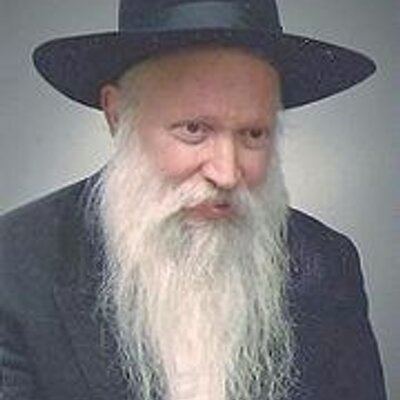
During their year in Israel, the young Ginsburgh studied at the Hebrew Gymnasium in Rechavia, where he learned Hebrew and began his path to Torah study by reading Ethics of the Fathers, which left a great impression upon him. Upon their return to Philadelphia, he met the Rebbe of the Nadvorna Chassidic dynasty, Rabbi Meir Isaacson, author of the Mevasser Tov responsa, and at the age of 15 became a baal teshuva. He attended the University of Chicago, majoring in mathematics and philosophy. He then completed a Masters in Mathematics at the Belfer Graduate School of Science of Yeshiva University. At the age of 20, he abandoned his doctorate studies to devote himself entirely to Torah study.
Israel
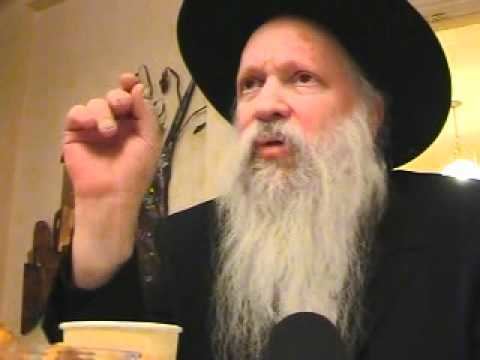
In 1965 he returned to Israel and studied at the Yeshivah of Kamenitz in Jerusalem. He spent 1966 through 1967 at the Slonim shul in Tiberias. After the Six Day War, Ginsburgh went to Jerusalem and was one of the first to move into the old Jewish quarter. There, together with his future father-in-law, Rabbi Moshe Zvi Segal, he began renovating the ruins, sleeping at night in the Tzemach Tzedek synagogue.
In the summer of 1967, he went to the Torat Emet Chabad yeshivah in Jerusalem, where he studied the Chabad school of Chassidus in depth. That year he visited the Lubavitcher Rebbe, Rabbi Menachem Mendel Schneerson, and remained in Crown Heights, Brooklyn for several months. There, he was accepted for private audience with the Rebbe, whose guidance became his leading influence.
When he returned to Israel he married Rabbi Segal's daughter, Romemia. They lived in Jerusalem, where Ginsburgh studied with Reb Asher Freund, helping to establish Freund's charity organization, Yad Ezrah. He also took part in founding Freund's Or Yerushalaim yeshivah in Jerusalem, where he taught Talmud, Shulchan Aruch, and Chassidut. During this period a kernel of students developed around him.
In 1971, following an instruction from the Lubavitcher Rebbe, he moved with his wife and growing family to Kfar Chabad.
In 1973, at the beginning of the Yom Kippur War, under instruction from the Lubavitcher Rebbe, Ginsburgh visited the warfront to transmit the Rebbe's blessing to officer Ariel Sharon, who later became 11th Prime Minister of Israel. The next morning, after a successful battle, Ginsburgh presented Sharon with a lulav and etrog.
Ginsburgh founded the Chabad house in the Yamit settlement in Sinai, where he lived during the last few weeks before the settlement's destruction by the Israeli government in 1982.
In 1982, Ginsburgh returned to Kfar Chabad, and was asked by Jerusalem rabbi and philanthropist Yosef Eliyahu Deutch to serve as head of the Shuva Yisra'el Yeshivah on Yo'el Street. Rabbi Ginsburgh gave frequent classes on a wide variety of subjects, from the exoteric to the esoteric parts of the Torah. Many were taped and form a large part of the 15,000 lecture archive of his classes. Ginsburgh served as the Rosh Yeshivah of the Od Yosef Chai Yeshivah (then located at Joseph's Tomb) from 1987 until the retreat of the IDF from the Tomb of Joseph in Nablus during the Al-Aqsa Intifada (2001). He also served as the head of a Kollel in the Menuchah Rachel Synagogue in Hebron and as the head of a Kollel in the ancient Shalom Al Yisrael Synagogue in Jericho. He currently serves as the president of a number of educational institutes run by his students, including the Torat Chaim elementary school for boys (Jerusalem), the Ya'alat Chen elementary school for girls (Jerusalem), Ma'ale Levonah high school for girls, and the Tom Vada'at Yeshivah in Jerusalem. He is also president of the Od Yosef Chai Yeshivah since its relocation to Yitzhar. In addition, he is the dean of the Torat Hanefesh School of Chassidic Psychology, founded and run by his students.
Ginsburgh currently lives with his wife in Kfar Chabad. One of his sons is Rabbi Yossi Ginsburgh, the Rosh Yeshivah of Tomchei Temimim Yeshivah in Ramat Aviv.
Teachings
Ginsburgh follows Chassidic practices in his teaching style and is proficient in many aspects of Chassidic literature. He bases his teachings on Kabbalah and Chassidut and presents them in practical terms, rendering the profound concepts of the original Kabbalistic texts relevant to today's world and presenting them in modern language. Although the media has dealt almost exclusively with his two booklets that address politics, the grand majority of his work is of a broader and deeper scope. He has written books on Jewish law, Kabbalah, Torah and science, psychology, love, marriage and education. He has also published a book addressed to children, named "Anochi Ve'Hayeladim" ("Myself and the Children"). Ginsburgh specializes in analyzing modern cultural phenomena in the light of Kabbalah. These include psychology, psychoanalysis, homeopathy and economics.
He has published over 100 volumes of original work in Hebrew and another 17 in English. Some of his books have been translated into French, Russian, Spanish and Portuguese.
Ginsburgh's teachings form a methodical ideology that covers three major areas: the individual, society and the Jewish national state. He has also developed a social and enonomical renewal strategy based on Torah teachings, called "The Dynamic Corporation." One of his seminars was recognized by the Israeli Ministry of Education as a supplementary teachers' training course. His books are published by the not-for-profit Gal Einai Institute, founded by Ginsburgh in 1991. The Hebrew name Gal Einai is taken from Psalms 119:18, meaning "Open my eyes."
He delivers classes in Israel, and has lectured in the United States and other countries including France, Canada and England.
Since December 2012, Ginsburgh has been a lead speaker at an annual gala evening commemorating the Chassidic festival 19 Kislev. The event includes performance of many of his musical compositions. In 2015 the event was held at Culture Palace in Tel Aviv, with an audience of approximately 3000 people.
Since June 2016, Rabbi Ginsburgh has been delivering a monthly class in English with live international internet broadcast. The hour-long class is followed by a session in which Ginsburgh replies to questions from the viewers and from the audience in Jerusalem.
Ginsburgh's style of teaching combines structured thought together with a freer, associative component that manifests in his generous use of the ancient tradition of gematria (Hebrew numerology), by which he translates between words and numbers. He also implements the use of figurate numbers in interpreting Torah verses.
Psychology
Ginsburgh's contribution to Chassidic psychotherapy has opened up new horizons in therapeutic practice, whose processes are already evident in modern clinical psychology. Ginsburgh sees awareness of the Divine as the key to successful psychological therapy. He aims to find the balance between science and the Torah, which will allow establishing psychology on the Torah together with empirical analysis of the data in order to develop working theories.
Ginsburgh's writings on psychology develop the three-stage Chassidic model of submission, separation and sweetening that originated in the study halls of the Ba'al Shem Tov and his followers. He has thus severed the chain of non-Jewish religious sources upon which all western schools of psychotherapy are founded.
Meditation
Ginsburgh does not adopt foreign meditative methods. He remains faithful to the Chabad system of meditation, which consists of Torah study, pre-prayer meditation, and meditation during prayer. His particular innovation is the connection between personal consciousness achieved through meditation, and a change in the collective consciousness.
Ginsburgh defines two types of meditation, "general meditation" (הִתְבּוֹנְנוּת כְּלָלִית) and "detailed meditation" (הִתְבּוֹנְנוּת פְּרָטִית) The purpose of general meditation, according to Ginsburgh, is to arouse one's natural love and awe of God. In order to arouse love, he recommends meditating on how God vitalizes the individual and the entire world at every single moment of time. Similarly, he recommends meditating on God's omniscience to arouse fear of God in one's heart.
According to Ginsburgh, three general meditative aids are music, movement and breathing exercises.
Music and art
Ginsburgh began composing at a very young age. He has composed hundreds of songs and original melodies in the Chassidic tradition. He has also composed a number of musical compositions in the genre of world music. His music has been published in dozens of discs, which include discs that conserve Chassidic songs and melodies from bygone eras.
Rabbi Ginsburgh has appeared and sung together with Shlomo Carlebach.
Russian violin virtuoso, Sanya Kroytor has performed renderings of some of Rabbi Ginsbrugh's compositions, and has played violin accompaniment to Rabbi Ginsburgh singing the Chassidic melody Tzama Lecha Nafshi.
Ginsburgh's compositions are performed by a number of musicians and singers, including Shuli Rand, Erez Lev Ari, Yosef Karduner, Yishai Ribo, Aharon Razel, Shlomo Katz, and Daniel Zamir.
Israeli musician, Ariel Zilber, performs some of Ginsburgh's works.
Ginsburgh has also co-designed a number of pieces of Jewelry based on ancient Kabbalistic ideas, expressing love, peace and grace.
Students
Over the years, Ginsburgh has accumulated a large number of students from all over the world.
In the 1980's a group of ba'alei teshuvah crystallized around him, some of whom were inspired to found the Bat Ayin settlement in Gush Etzion. Following the death of Rabbi Tzvi Yehuda Kook, another group of students joined him from the Merkaz Harav yeshivah. They sought to fill the gap left by their rabbi's death by heading for new spiritual horizons in Kabbalah and Chassidut. They founded the original Od Yosef Chai yeshivah at Joseph's Tomb, and sought a significant spiritual leader in these spiritual fields to serve as their head. Ginsburgh later conceded to their request to join them as their rosh yeshivah.
In Israel today, there are communities of his students in Jerusalem, Bat Ayin, Yitzhar, Kfar Chabad, and Rechovot. His students include Charedim, religious Zionists, and Chabad Chassidim, as well as ba'alei teshuva.
Amongst the most notable are:
Religious and political views
Ginsburgh advocates the reinstitution of Jewish monarchy in the Land of Israel. (Some of his own followers want him to be the king.) He opposes efforts to remove Jewish settlements from the West Bank and encourages his followers to attempt to dissuade soldiers and police officers from carrying out evacuations. He advocates "Jewish labor" − the idea that under the current state of affairs in the land of Israel, Jews should employ other Jews. In accordance with Maimonides' ruling and many rabbinical authorities, he believes that taking the current security risks into consideration, Gentiles should not be allowed to live in the Land of Israel, unless they become the "righteous of the nations".
Ginsburgh also supports the rebuilding of the Jewish temple, believing that this would facilitate spiritual elevation and hasten redemption. Following a response from the Lubavitcher Rebbe, he does not currently advocate visiting the Temple Mount, the site of the Dome of the Rock and Al-Aqsa Mosque.
Ginsburgh does not promote violence. His students seek to actualize the messianic vision not by violent revolution, but by a change of consciousness that will take place within individuals and will eventually encompass the collective.
In his 2007 book Kabbalah and Meditation for the Nations Ginsburgh writes, "Ours is the first generation in modern times to understand the truly universal human condition and to seek to bring all peoples of the earth together in peace and harmony."
Controversy
In 1989, following the arrest of seven of his students after the disputed shooting of an Arab girl during a settler rampage through the Palestinian West Bank village of Kifl Haris (in response to rock-throwing by the Arab villagers), Ginsburgh reportedly "offered biblical justification for the view that the spilling of non-Jewish blood was a lesser offense than the spilling of Jewish blood." He stated that threatening to kill Jews comes under the ruling, 'He who comes to kill you, you should kill him first.' The Ashkenazi chief rabbi Avraham Shapira criticized Ginsburgh's views.
In 1994, Ginsburgh received widespread criticism for his article "Baruch Hagever" in which he defended Baruch Goldstein who had massacred 29 Palestinian worshippers at the Cave of the Patriarchs in Hebron. Rabbi Ginsburgh wrote that it is possible to view Baruch Goldstein's act as either following or defying five Halachic principles, namely "sanctification of God's name", "saving life" (referring to allegations that Goldstein had received prior warning from the IDF regarding a planned Arab massacre of Jews, "revenge", "eradication of the seed of Amalek" and "war". The conclusion to the article is that Goldstein's act emanated from the super-rational powers of his soul, therefore one cannot rely on logical reasoning to determine whether the act was worthy or condemnable.
The Jerusalem Post asserted that Ginsburgh had called the massacre a mitzvah. Motti Inbari commented on this:
In his writings, Ginzburg (sic) gives prominence to Halachic and kabbalistic approaches that emphasize the distinction between Jew and non-Jew (Gentile), imposing a clear separation and hierarchy in this respect. He claims that while the Jews are the Chosen People and were created in God's image, the Gentiles do not have this status.... Ginzburg stated that, on the theoretical level, if a Jew requires a liver transplant to survive, it would be permissible to seize a Gentile and take their liver forcefully. From this point only a small further step is required to actively encourage and support the killing of non-Jews, as Ginzburg did in the case of Goldstein.
Ginsburgh responded to claims that he permits the murder of non-Jews:
Never did I advocate taking non-Jewish life, exept when tragically forced by war. The Torah forbids this, emphasizing that ALL human life is sacred. It is our task, as G-d's chosen people to enlighten all humanity and raise the consciousness of mankind to fully recognize the sanctity of all life... When G-d deemed it necessary that the Egyptians drown in the Red Sea to save and liberate His chosen people, Israel, He nonetheless forbade His ministering angels to rejoice at the death of the Egyptians, His own creations. The Torah instructs us to "emulate His ways" of mercy and lovingkindness to all.
Although Ginsburgh's name appears on the Baruch Hagever pamphlet, he did not write it. It is a summary of one class he gave after the incident. Like the majority of his books, the pamphlet was edited and adapted by one of his students in his own words and style. Ginsburgh did not choose the title of the pamphlet.
In 1996, Ginsburgh was arrested for administrative detention for 60 days for his pronouncements that the state should take action against Arabs in response to the recent wave of terror attacks. After an appeal against the detention, Ginsburgh was exonerated and released without charge after nineteen days. The judge declared that the accusations were baseless and that there was no danger that his words were liable to bring his students to harm Arabs. Following his release, Ginsburgh wrote, "The court recognized that my arrest entailed not only a violation of freedom of speech, but an attack against teaching Torah in general and Chassidic philosophy in particular."
In 2003, Ginsburgh was indicted on charges of encouraging racism against Arabs in his booklet "Tsav Hasha'a - Tipul Shoresh" (טִיפּוּל שׁוֹרֶשׁ, "Order of the Day - Root Treatment"). The charges were dropped after he issued a clarification letter.
In 2010, the Israeli newspaper Haaretz called Ginsburgh "a well known radical on his views on Israel Arab public." A former head of the Shin Bet, Carmi Gillon, told The Forward in 2016 that, in his view, "[Ginsburgh's] words count as incitement and he should have faced charges a long time ago."
In April 2014, Ginsburgh called price-tag acts of vandalism, "unsupervized acts" and stated that there is no need to use hands-on tactics. Instead, he suggested achieving goals by power of word alone, speaking out firmly but calmly to transmit the message.
In May 2014, the Shin Bet claimed that the price-tag acts were the handiwork of about 100 individuals who were inspired by Ginsburgh's ideas. Tzvi Sukkot, self-identified as a prior "hill top youth," says that it was Rabbi Ginsburgh who convinced him to stop his violent activities against Arabs and find more legitimate ways to express his frustration. "Ginsburgh spoke out very clearly against violence. He said that we should act... within the framework of the law."
Ginsburgh and his students have responded to the accusations made against him by stating that he has been misunderstood and that his words have been taken out of context.
In a "personal letter" distributed to a small group of protestors demonstrating outside the Culture Palace event in Tel-Aviv, Rabbi Ginsburgh wrote:
The dangerous inciting rabbi whom you perceive is not desirable in my eyes and I do not identify with him. I know that certain things I have said have been misunderstood or taken out of context... These misunderstandings stem from the differences between the personal "languages" that we use… I truly believe that by bridging these gaps we will be able to understand one another better, and with God's help, even agree.
At the same occasion, Ginsburgh's aide, Rabbi Itiel Giladi, explained that the Torah concepts of Chassidut and Kabbalah are far removed from the concepts that the media has adopted. Giladi said that this is why the media tends to view Ginsburgh's words in a superficial manner that is taken out of its true context.
